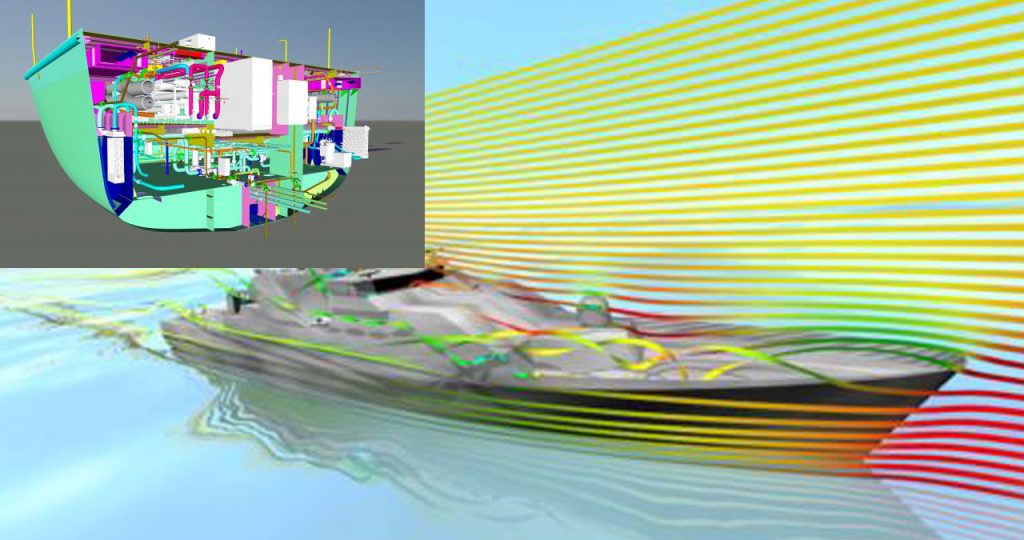Marine

- Resistance and Propulsion Prediction – Hydrodynamic simulations to analyze and optimize ship resistance and power requirements.
- Hull Form Optimization – Fine-tuning of hull shape to achieve the best hydrodynamic efficiency.
- Propeller Cavitation Studies – Prediction of cavitation zones that can damage propellers and reduce efficiency.
- Mooring and Riser Simulations – Studying the behavior of mooring lines and risers under the influence of waves and currents.
- Sloshing Analysis – Predicting the behavior of fluids inside tanks during ship motion.
- Pedestrian Wind Comfort on Deck – Simulating airflow over decks to ensure crew and passenger comfort and safety.
- Aerodynamics of Vessels – Studying airflow around ship superstructures (especially on cruise ships, container ships, and naval vessels) with the goal of reducing aerodynamic drag, improving vessel stability in strong winds, and optimizing bridge and funnel designs for better operational safety and fuel economy.
